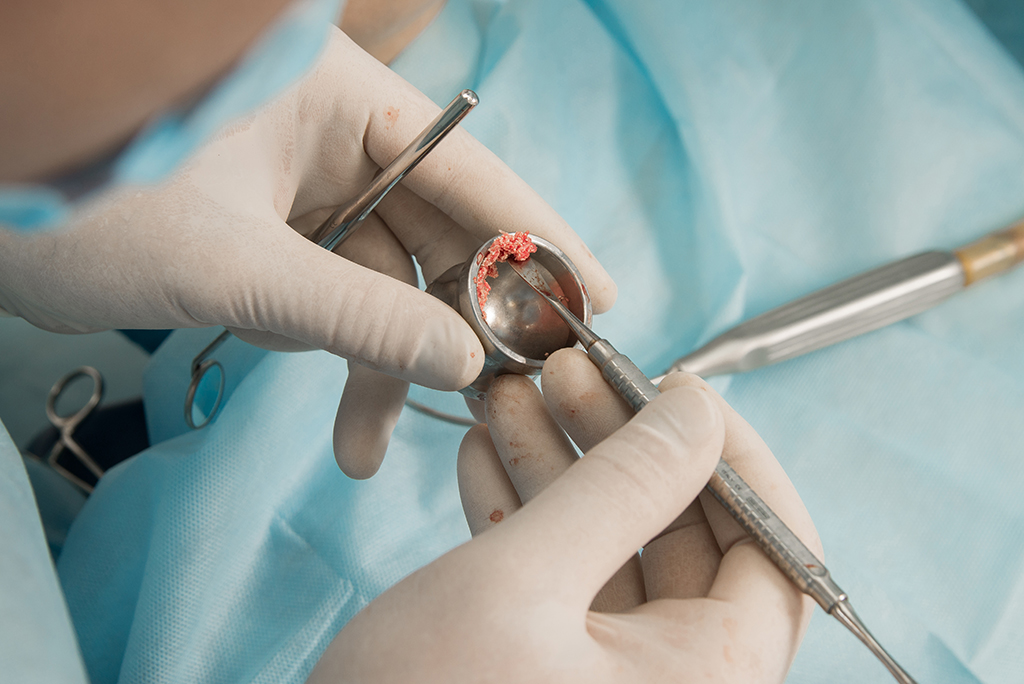
Bone Graft From A Licensed Oral Surgeon | Plano, TX
Photo By Aleksandr Fostic at Shutterstock
At NextGen OMS, our oral surgeon handles complex procedures involving the face, mouth, and jaw. This includes bone grafts, designed to increase bone in your jaw following bone loss. If you need one near Plano, TX, feel free to make an appointment for a free consultation. We welcome new patients in need of oral surgery.
During the procedure, the surgeon harvests bone from somewhere else in your body and fuses it into your jaw. Sometimes, they use synthetic bone instead. You may need a bone graft prior to getting a dental implant, which requires a certain amount of bone to ensure success.
Bone loss also impacts the health of your teeth and gums. Keep reading to learn more about how a surgeon performs dental bone grafts and what you can expect following the procedure.
Why Do People Get Bone Grafts?
Your dentist may refer you to an oral surgeon for dental bone grafting. There are several ways to perform this procedure. However, they are all similar. The dentist makes an incision in the jaw and attaches bone or other material to it.
Many people who need bone grafts have lost multiple teeth or suffer from severe.T gum disease. These conditions accelerate bone loss and make it difficult to install dental implants.
Preferably, the oral surgeon can harvest bone from your tibia, hip, or jaw. When the surgeon uses your own bone is called an autograft. Using your own bone promotes faster healing and helps avoid infections and other issues.
Types of Bone Grafts
Oral surgeons perform four types of bone grafts, categorized by material, as follows:
- Autografts. This type of bone graft uses bone from your own jaw, hip, or other area of the body.
- Allografts. This involves a bone graft from another person, typically a cadaver.
- Xenografts. This type of bone graft uses this bone from a cow or pig. Sometimes, coral is used.
- Alloplasts. This surgery uses calcium phosphate or another synthetic material to create the bone graft.
Medical professionals are still looking for the ideal material to use for bone grafts. Doctors may one day be able to offer bone crafts created from gene-modifying drugs and other high-tech solutions.
Good Candidates For Bone Grafts
Here are some of the most common reasons you may need a dental bone graft.
People who need an implant for a missing tooth may need a dental bone graft. If so, your dentist may recommend that you make an appointment for a consultation at NextGen OMS. Our surgeon can handle complex dental procedures including bone grafts and dental implants. So, rest assured that you are in good hands.
Dental implants look like screws installed in the job down. After the implant heals, your dentist puts the crown on top that looks and functions like your lost tooth. Bone grafting increases the strength of the implant and gives it a better chance of succeeding.
If you aren’t sure whether you’re a good candidate for bone grafting, consult with your dentist or set up an appointment to talk to Dr. Eftekhari today.
Those suffering from gum disease or tooth loss also make great candidates for bone grafts. Even if you don’t want a dental implant, getting a dental bone graft can help support your jaw and slow down bone loss in the area. This can help prevent the loss of additional teeth as well.
When you lose a tooth, bone loss starts almost immediately. Unfortunately, it doesn’t stop there. Bone loss can affect nearby teeth, causing them to become loose and destabilized. By stabilizing the jaw with a bone graft, you can help prevent further bone loss and protect the rest of your teeth.
Managing disease effectively can help prevent tooth loss. by getting a bone graft, you can help prevent the spread or worsening of gum disease.
As we age, we naturally lose bone mass in the jaw. This can cause your face to appear shorter. Some clients request bone grafts to help fill out their faces and regain their natural appearance. When your lower jaw loses mass, it seems to extend forward. This can change the appearance of the mouth and lips, and the skin may become more wrinkled. Older adults often go through bone grafts to make up for bone loss due to osteoporosis.
In reality, people of all ages can experience bone loss and require specialized surgery to replace it. Dental bone grafts can help you recover from bone loss due to major infections, health problems, and tooth loss. Our oral surgeon is proficient in all types of bone graft surgery and treats both adults and children.
Bone Graft Surgery by an Oral Surgeon
Prior to beginning the procedure, the oral surgeon will administer anesthesia. A dental technician cleans the impacted area, and the surgeon cuts into the gum, separating it from the bone and giving him access to put the bone graft into position.
Dr. Eftekhari positions the bone graft material between the sections of bone that need to grow together. The artificial or real bone material is secured to the natural bone using a dissolvable adhesive or screws, depending on the severity of your bone loss.
Lastly, the incision is sewn up so that it can heal properly. It may take several weeks for your mouth to heal and it’s important to follow the instructions of the oral surgeon exactly to promote healing. You may have dietary restrictions to help protect the treated area and you’ll have to come back for a checkup to make sure that the area heals properly.
If you were referred to NextGen OMS by your dentist in Plano, TX, you may have to return to the dentist’s office for a follow-up visit as well.
Contact NextGen OMS to book a consultation with an oral surgeon in Plano, TX.


